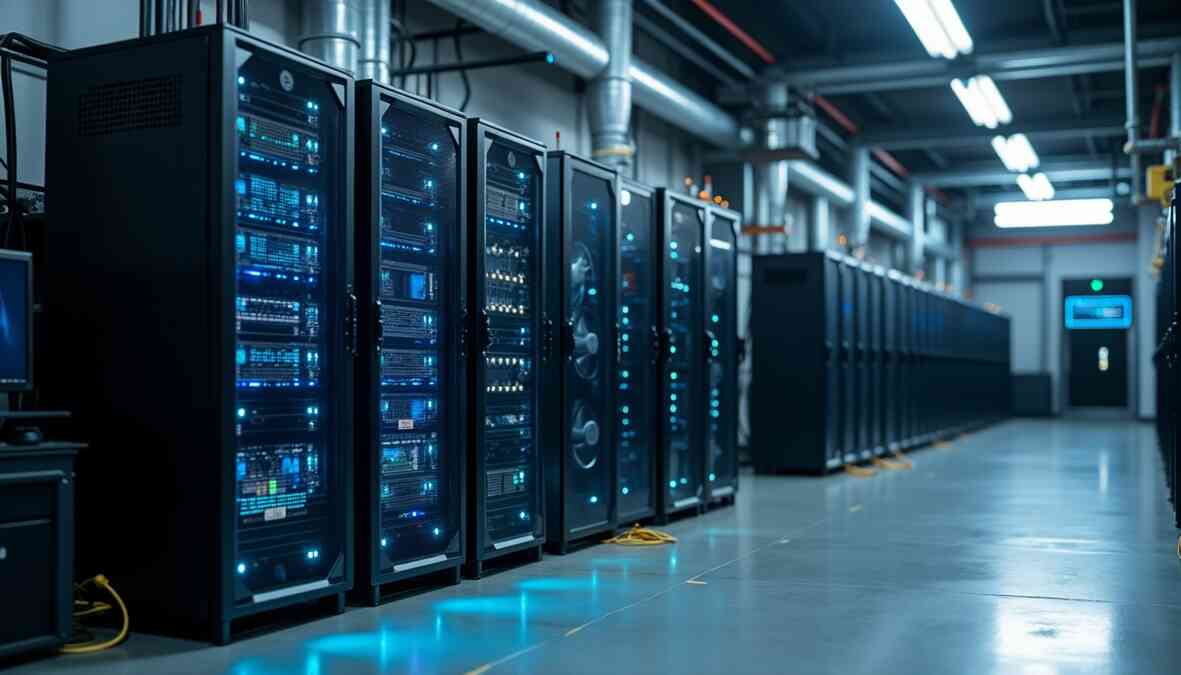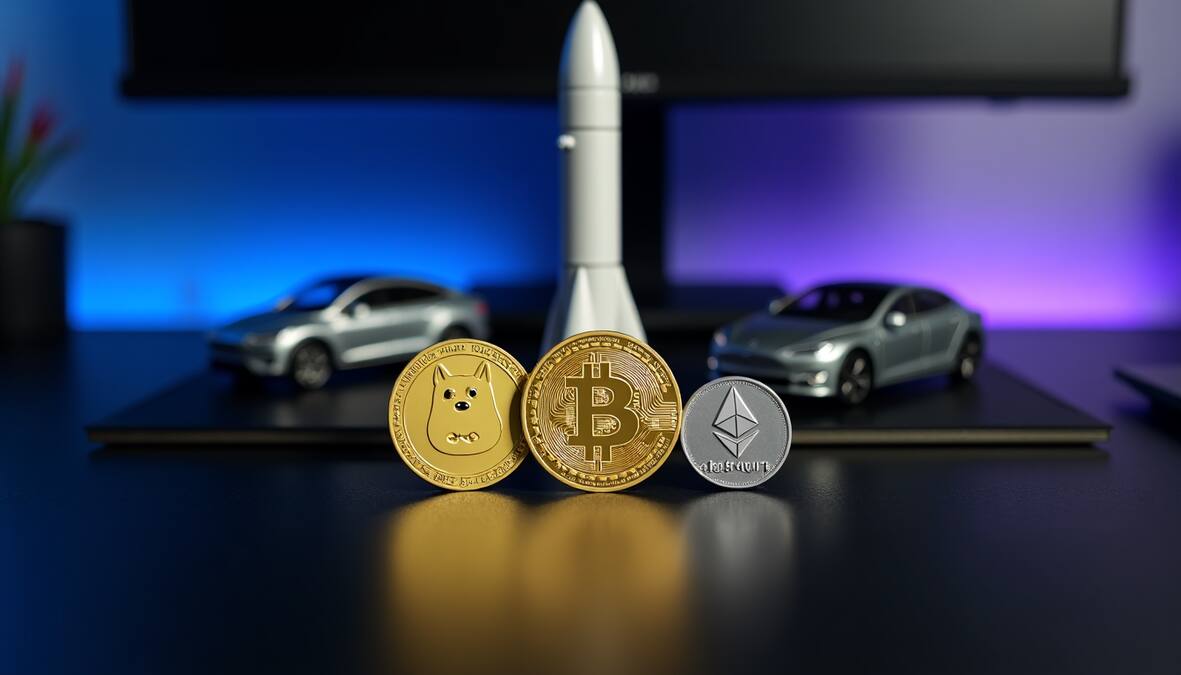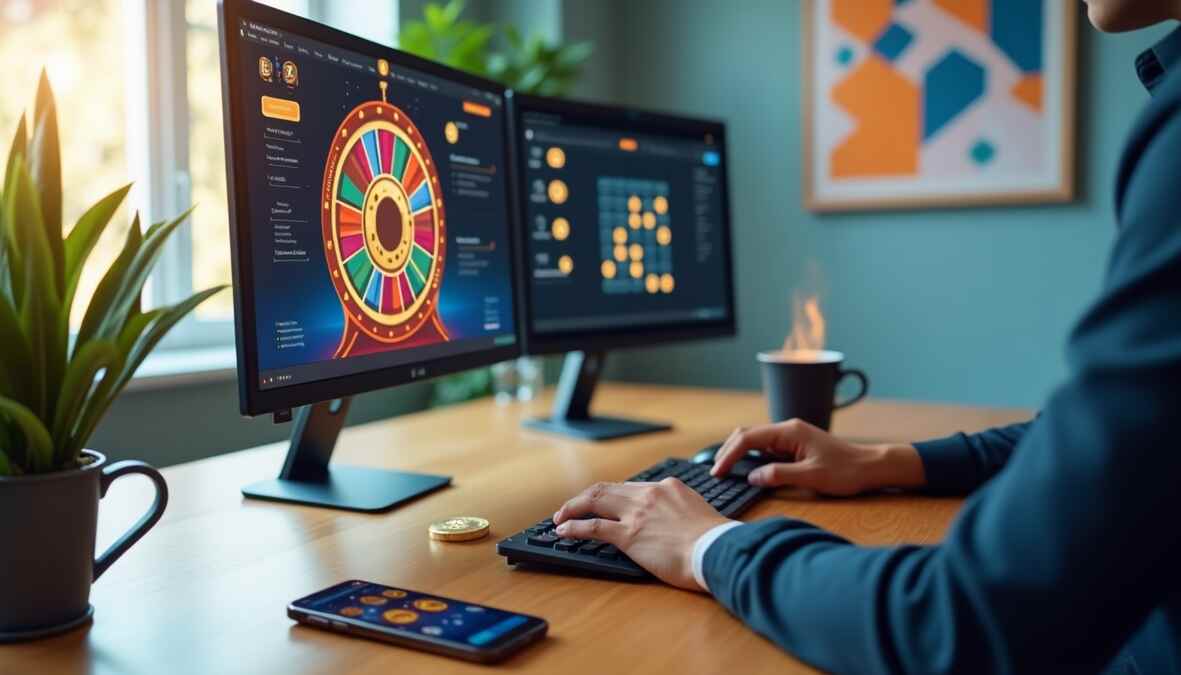Crypto Mining:The world of crypto mining looks vastly different from when Bitcoin first appeared in 2009. Today’s mining operations need 6 times more computing power than what it took to mine the first Bitcoin blocks. The concept might seem daunting at first glance, but let’s break down crypto mining’s workings into simple terms.
Mining serves as the backbone of cryptocurrency networks. Specialized computers compete to generate new cryptocurrency and verify blockchain transactions. Miners solve complex mathematical problems every 10 minutes, and successful ones earn 3.125 Bitcoin as their reward. The process demands enormous power – comparable to what smaller countries consume annually.
This piece offers a detailed look at crypto mining’s essentials. You’ll discover everything from simple concepts to practical steps that help you start mining. We’ll explore mining’s profitability and help you decide if it fits your investment strategy in 2025.
What is crypto mining in simple terms?
Crypto mining stands as the foundation of many cryptocurrency networks. It works as a system to verify transactions and release new coins into circulation. Unlike printing traditional money, crypto mining needs powerful computers to solve complex mathematical puzzles for rewards.
What is crypto mining? Mining happens when specialized computers verify new transactions and generate new cryptocurrency coins. These computers race to solve cryptographic puzzles. Successful miners earn fresh coins as rewards. This creates a positive loop: miners keep the blockchain running, the blockchain gives out coins, and these coins push miners to keep securing the network.
A cryptocurrency transaction starts when miners check two key things. They verify your digital signature to prove you own the coins. They also make sure you haven’t spent these coins before—this fixes the “double-spending” problem. Once verified, a miner adds this transaction to a new “block” that joins the blockchain about every 10 minutes.
Crypto mining vs traditional money systems
Banks and payment processors handle traditional banking in a central way. Cryptocurrency mining spreads this job across thousands of computers worldwide. This basic difference leads to several distinct features:
- Processing speed and transparency: Traditional bank transfers might take days and happen privately. Crypto mining confirms transactions in minutes and records them on a public ledger anyone can see.
- Trust mechanism: Traditional systems need you to trust many institutions and middlemen. Crypto mining builds trust through math-based verification—no single group can control the system without massive computing power.
- Environmental considerations: Traditional currency systems leave their mark on the environment throughout their lifecycle. All the same, Bitcoin’s carbon footprint reaches almost 4-5 times more than all traditional currency forms combined yearly.
- Decentralization: Problems at one institution can break traditional banking systems. Crypto mining networks spread security across many independent points, which makes them harder to manipulate.
Why mining is essential for cryptocurrencies
Mining does more than just add interesting technology—it powers how cryptocurrencies work. Here’s why:
Mining fixes the vital “double-spending” problem that used to plague digital currencies. Digital money needed a central authority to track spending before Bitcoin came along. Mining cleverly solves this through spread-out verification.
The mining process protects the blockchain’s security and integrity. The system needs so much computing power to verify transactions that attacking the network costs more than potential gains.
Mining creates financial rewards that keep the whole system running. Miners get new cryptocurrency plus transaction fees for their work. This smart approach gives out new coins while protecting the network.
Mining lets people trade directly without middlemen. Your cryptocurrency transaction skips banks and clearinghouses—miners verify it and record it on the blockchain.
Miners compete to solve math puzzles, which keeps blocks joining the blockchain steadily—about every 10 minutes for Bitcoin. This steady pace helps stabilize the network.
Mining rewards decrease on a set schedule (Bitcoin cuts rewards in half every four years). This gradually moves miners’ focus from new coins to transaction fees. The controlled release of new coins creates a predictable supply unlike traditional currencies’ changing inflation rates.
Crypto mining gives cryptocurrencies their unique features: no central control, strong security, and freedom from outside oversight. Blockchain technology’s groundbreaking potential needs mining to work.
How does crypto mining work step by step?
The math behind cryptocurrency works like a high-stakes competition. Miners worldwide compete to crack complex puzzles. The winners get to add new transactions to the blockchain’s permanent record. Let’s examine this process step by step.
1. What is a hash and why it matters
A mathematical function called hashing sits at the heart of crypto mining. A hash turns any data input (whatever the size) into an encrypted output with a fixed length—you’ll see it as a string of numbers and letters. Bitcoin uses the SHA-256 algorithm that always creates a 64-character output.
Hashes play a vital role in mining because:
- They’re deterministic – the same input always gives you the same output
- They’re one-way – you can’t work backward from the hash to get the original data
- They’re collision-resistant – it’s nearly impossible for two different inputs to make the same hash
- Small changes to input data create totally different hashes
These features make hashes ideal for cryptocurrency security. Miners use them to verify transactions and protect the network from fraud. The math challenge of creating specific hash values creates the “work” in proof-of-work systems, which makes attacks too expensive and impractical.
2. Understanding blocks and blockchains
Cryptocurrencies pack transactions into units called “blocks.” Each block has:
- A bunch of pending transactions that need verification
- A link to the previous block (its unique hash)
- A timestamp
- A special value called a “nonce” (number used once)
- Extra technical data like the Merkle root (a summary hash of all transactions)
These blocks connect in time order to form a “blockchain”—a permanent record of all transactions. Each block connects to the one before it through its hash value. This creates an unbroken chain back to the first block ever made.
This design makes blockchains super secure. Anyone trying to change an old transaction would need to recalculate not just that block’s hash but every block that came after it—a task that needs massive computing power.
3. The role of miners in verifying transactions
Miners do two key jobs: they check transactions and keep the network safe. Here’s how it works:
Miners start by gathering unconfirmed transactions from the network’s memory pool. They check each transaction’s authenticity with cryptographic signatures and make sure senders have enough funds to prevent double-spending.
They pack these checked transactions into a candidate block. Since blocks have limited space, transactions with higher fees usually get priority.
The tough part comes next—solving the proof-of-work puzzle. Miners must find a nonce value that creates a hash below the network’s target difficulty when combined with the block’s data. This takes billions of tries and lots of computing power.
The first miner to find a valid hash tells everyone else. Other nodes double-check this solution, and if it works, they add the new block to the blockchain. The winning miner gets two rewards:
- New cryptocurrency (the “block reward”)
- Fees from all transactions in the block
A new block joins the chain about every 10 minutes for Bitcoin. The network adjusts the puzzle difficulty every 2,016 blocks (about two weeks) to keep this timing steady no matter how many miners join or leave.
This clever system creates a loop where miners earn money to keep the network safe. The decentralized setup stops any single group from taking control. The mining difficulty also protects the network by making attacks too expensive to attempt.
What do you need to start mining crypto?
You need specific hardware and software to start crypto mining. Your budget, technical knowledge, and mining goals will determine these choices. Let’s look at the equipment you need to join other cryptocurrency miners.
Choosing between CPU, GPU, ASIC, or cloud mining
Bitcoin mining started with standard computer processors (CPUs), but today’s miners have four different options:
CPU Mining: Standard computer processors were once enough for Bitcoin mining. Now they don’t work well for mainstream cryptocurrencies because of their limited processing power. CPUs can only deliver tens to hundreds of hashes per second and use 100-600W of power. You can mine any proof-of-work cryptocurrency with them, but they work best for newer or CPU-friendly coins like Monero.
GPU Mining: Graphics processing units give you much more mining power than CPUs. They can deliver hundreds to thousands of hashes per second. A mining setup with several high-end GPUs (like NVIDIA GeForce RTX 3090 or 4090) lets you mine different cryptocurrencies as profits change. You’ll need to put together multiple parts including motherboard, CPU, RAM, power supply, and risers. A multi-GPU rig with four RTX 4090s would earn about $3.89 daily after power costs, taking 5.6 years to pay back.
ASIC Mining: Application-Specific Integrated Circuits are the most powerful choice. These machines are built specifically to mine certain cryptocurrencies. ASICs like the Bitcoin Miner S19 XP ($4,600) can process 141 terahashes per second (TH/s)—much faster than GPUs. Better models like the S21 ($7,000) reach 200 TH/s, while the S21 Hyd. ($11,000+) hits 335 TH/s. ASICs cost more and work only with specific algorithms, but they pay for themselves faster because they use power more efficiently.
Cloud Mining: Many newcomers choose cloud mining. This option lets you rent mining power from companies that own and run the hardware. Cloud mining saves you from buying equipment, setting up systems, and paying electricity bills directly. You buy some “hash power” and get mining rewards based on that amount. This makes cryptocurrency mining available to people who lack technical skills or good mining locations.
Simple software and internet requirements
Every mining setup needs certain software:
Mining Software: Special programs like CGMiner, BFGMiner, or EasyMiner connect your hardware to cryptocurrency networks. This software runs your mining operations and helps you join mining pools where miners team up for regular rewards.
Operating System: Windows works for simple setups. Serious miners often use special mining operating systems like RaveOS, HiveOS, or Awesome Miner to get better performance.
Cryptocurrency Wallet: You need a secure wallet to store your mined coins. You can choose hardware wallets (Ledger, Trezor) or software wallets with good security features.
Different mining methods need different internet and power setups:
- Internet Connection: A stable, wired connection works better than Wi-Fi. You’ll use between 250MB/day (8GB/month) for basic setups and 500MB/day (15GB/month) for recommended ones.
- Power Supply: Mining uses lots of electricity. Bitcoin mining with normal settings needs about 5GB/day (150GB/month) of upload capacity.
- Cooling System: Mining creates heat. You’ll need proper cooling like fans, heat sinks, or liquid cooling systems to protect your hardware.
- Storage Space: Bitcoin Core needs 350GB of disk space plus 340GB for the first download when you start mining.
Your mining operation’s growth depends on electricity costs. These costs affect your profits heavily. Most successful miners work in places with cheap power to make more money.
How to mine crypto: your first steps
After getting your hardware and software ready, you’ll face a big decision that shapes your mining experience: mining by yourself or teaming up with others. This choice will affect your earnings, how fast you learn, and your overall results.
Joining a mining pool vs solo mining
Solo mining is the traditional way to mine crypto. You work by yourself to solve blockchain puzzles. Success means you get the whole block reward. Solo mining lets you work on your own terms – you pick which cryptocurrencies to mine and keep all the rewards. You won’t pay pool fees and might earn more if you mine a block.
Pool mining combines your computing power with other miners. This increases everyone’s chances of solving blocks together. The pool shares rewards based on how much work each miner puts in. Mining pools charge a small fee of 1-3% from rewards. Here’s what makes pools great:
- You get paid more often than solo mining’s winner-takes-all setup
- You can start with less powerful hardware
- You learn from other miners and get help when needed
- The pool handles most technical setup tasks
New miners usually do better in pools. Yes, it is worth noting that over 60% of Bitcoin’s total network hashrate comes from just two mining pools: Foundry USA and Antpool. Both individual and institutional miners prefer pool mining, as these numbers show.
The choice of mining pool depends on several factors. Look at the pool’s hashrate, how stable it runs, payment methods, and what other miners say about it. Pools offer different payment plans. PPS+ gives you guaranteed rewards even if the pool doesn’t find blocks. PPLNS payments change based on luck but might pay more over time.
Using a crypto mining calculator to estimate profits
A crypto mining calculator helps you figure out what you might earn before you start mining. These tools learn about your setup by looking at:
- Your equipment’s hash rate (computational power)
- Energy consumption and electricity costs
- Network difficulty
- Current cryptocurrency price
- Pool fees (if applicable)
NiceHash, WhatToMine, and CryptoCompare are popular calculators right now. Just put in your hardware details and local power costs. The calculator shows what you might make daily, weekly, and monthly based on current market conditions.
To cite an instance, CryptoCompare’s calculator might show that some setups lose about $23.43 monthly after paying for electricity. NiceHash lets you check specific devices or hashrates for more than 30 mining algorithms.
These calculators show if your setup will make money in today’s market. Crypto prices, network difficulty, and power costs can change your profits quickly. It’s smart to check these calculators often as markets change.
The numbers from these tools help set realistic goals, whether you mine alone or join a pool. You’ll know if mining makes financial sense before spending too much time and money on it.
Is crypto mining still profitable in 2025?
Many miners wonder if crypto mining will still make money in 2025. The answer isn’t simple – your profit depends on several key factors that can make or break your mining operation.
Factors that affect mining profitability
Here are the key elements that determine if you’ll make or lose money mining in 2025:
Electricity costs are still the biggest expense miners face. Miners in Kazakhstan pay just USD 0.04 per kWh and can earn over USD 15.00 daily with an Antminer S21 Pro. The same setup would lose money in Germany, where power costs USD 0.35 per kWh.
Hardware efficiency makes a huge difference to your bottom line. The crypto world saw better mining equipment at lower prices in 2024. Modern ASICs now cost USD 16.00 per terahash, down from USD 80.00 in 2022.
Market conditions keep changing the profit equation. Bitcoin’s fourth halving in 2024 cut mining rewards to 3.125 bitcoins per block, which squeezed profits hard. Mining one Bitcoin now costs about USD 106,000, while prices sit at USD 102,175.
Network difficulty rises as more miners join the network. When difficulty goes up, your hardware solves fewer blocks but your costs stay the same.
Regulations look different everywhere you go. The Trump administration made the US a mining powerhouse through tax breaks and cheap energy. Meanwhile, Russia banned crypto mining in all but one of its regions until 2031.
How to use a mining profitability calculator
Mining calculators like NiceHash, WhatToMine, or CryptoCompare help you see real potential returns. These tools give you customized projections based on your setup:
- Input your hardware specifications – List your mining device or specific hashrate (computational power)
- Add electricity costs – Most calculators start with USD 0.13 per kWh
- Review the results – Check the “Days to Payback” number that shows when you’ll break even
You’ll see your estimated daily revenue, power costs, and net profit. The “Maximum Mining Days (profit>0)” metric tells you how long you can mine profitably under current conditions.
Note that calculators work with today’s numbers. Crypto prices change fast, difficulty levels shift, and energy costs vary – you need to check these numbers regularly to stay profitable.
Should you mine crypto or invest instead?
The crypto world debates a basic question: Should you buy cryptocurrencies directly or invest in mining equipment? Your resources, technical knowledge, and financial goals will help you decide.
Comparing mining vs buying crypto
Mining lets you actively accumulate cryptocurrency through computational work. Buying offers a more hands-off investment approach. These approaches differ in several ways:
Mining cryptocurrency works best if you believe Bitcoin’s price will rise faster than the network’s hash rate. People with access to electricity below $0.04 per kWh see mining outperform direct purchases even in bearish markets.
Direct cryptocurrency purchases give you straightforward exposure to price movements. You won’t need operational complexities or technical knowledge. The process is simpler, safer, and more liquid than mining. Your holdings trade easily on exchanges, while mining equipment proves harder to sell.
Research shows Bitcoin delivers better risk-adjusted returns than mining companies over longer periods. Owning miners proved better than owning Bitcoin about 53% of the time between 2017 and now.
Risks and rewards of each approach
Mining lets you earn “fresh” cryptocurrency directly. You might accumulate more coins over time than through direct purchases in favorable market conditions. The process acts like dollar-cost averaging with higher potential gains during big price jumps.
Mining comes with big risks. Quality ASICs cost $3,000 or more. You’ll face hefty electricity bills and decreasing rewards from halving events. Bitcoin rewards dropped to 3.125 BTC per block in 2024, which squeezed profit margins further.
Buying crypto needs less money upfront—you can start with $100. The process offers better liquidity and fewer operational risks. Market volatility remains your biggest concern.
Neither path guarantees profits. Miners must adapt to changing difficulty levels and energy prices. Investors’ success depends on market timing and wider adoption trends.
Conclusion
Cryptocurrency mining continues to be complex but can be rewarding in 2025. Mining just needs solid technical knowledge, the right equipment, and good electricity rates. It gives you distinct advantages over buying crypto directly, especially when you have access to cheap power and the best hardware.
Your success in crypto mining mostly depends on good planning. You should research hardware options first and use mining calculators to figure out potential profits. Joining a mining pool might work better than mining solo. Note that profits keep changing based on market conditions, network difficulty, and how well your equipment performs.
Direct cryptocurrency purchases could be a better fit if you want simpler market exposure. This path needs less technical know-how and gives you more flexibility. You’ll miss out on earning newly minted coins through mining though.
The crypto world needs you to understand the risks and stay up to date with market changes. Your decisions should reflect your specific situation rather than following what everyone else does.
FAQs
Q1. What exactly is cryptocurrency mining? Cryptocurrency mining is the process where specialized computers validate transactions and generate new digital coins. Miners compete to solve complex mathematical puzzles, with successful miners earning newly created cryptocurrency as a reward. This process is essential for maintaining the security and integrity of blockchain networks.
Q2. Is crypto mining still profitable in 2025? Profitability in 2025 depends on several factors, including electricity costs, hardware efficiency, market conditions, and network difficulty. While mining can be profitable in regions with low electricity rates and using efficient hardware, it’s important to regularly reassess profitability as market conditions change. Using mining calculators can help estimate potential returns based on your specific circumstances.
Q3. What equipment do I need to start mining cryptocurrency? To start mining, you’ll need specialized hardware such as GPUs (Graphics Processing Units) or ASICs (Application-Specific Integrated Circuits), depending on the cryptocurrency you want to mine. You’ll also need mining software, a stable internet connection, and a cryptocurrency wallet to store your earnings. For serious mining operations, consider investing in cooling systems and robust power supplies.
Q4. Should I mine cryptocurrency or invest in it directly? The choice between mining and investing depends on your resources, technical knowledge, and financial goals. Mining can be more profitable if you have access to cheap electricity and efficient hardware, while buying cryptocurrency directly is simpler and more liquid. Consider factors like equipment costs, operational complexities, and market volatility when making your decision.
Q5. How can I improve my chances of success in crypto mining? To increase your chances of success, consider joining a mining pool to receive more frequent, albeit smaller, payouts. Use mining calculators to estimate profitability before investing in equipment. Stay informed about market trends and technological advancements in mining hardware. Additionally, focus on cryptocurrencies that are well-suited for your hardware capabilities and have favorable mining economics.
Read more: omnh



![Elon Musk Crypto Coins: Hidden Gems vs Popular Picks 2025[Market Data] Elon Musk Crypto Coins](https://omnh.xyz/wp-content/uploads/2025/04/elon-musk-coin-150x150.jpg)





